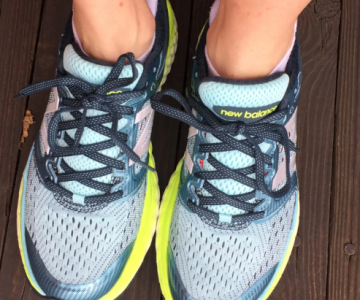If you’re a runner who’s dealt with persistent injuries or struggled to find the right shoes, there’s a simple solution that could transform your running experience—gait analysis. This technique helps pinpoint issues in your running form, particularly related to overpronation or underpronation, and ensures that you’re wearing the right footwear for your needs. Here’s a comprehensive breakdown of what gait analysis is, how it works, and why it’s essential for every runner.
What is Running Gait?
Your “gait” refers to how you walk or run, including your posture, technique, and the way your feet strike and leave the ground. Everyone’s gait is unique, influenced by factors such as height, weight, and body structure. From the moment we begin crawling as babies, our gait starts to form, and it evolves as we grow. When it comes to running, your gait directly affects your performance and injury risk.
The Role of Pronation in Gait
Pronation describes the way your foot rolls when it strikes the ground. There are three types:
- Neutral Pronation: This is when the foot rolls inward in a controlled manner, evenly distributing weight. It’s the most efficient and balanced type of pronation.
- Underpronation (Supination): Often seen in runners with high arches, underpronation occurs when the foot rolls outward, causing extra strain on the outer side of the foot. This can lead to stress on the muscles and tendons in the foot and ankle.
- Overpronation: Common in runners with flat feet or low arches, overpronation happens when the foot rolls inward too much, putting excessive strain on the muscles and tendons on the inside of the foot. This can lead to a variety of injuries over time, particularly in the knees and lower back.
What is Gait Analysis?
Gait analysis involves a detailed study of how your body moves while running, specifically looking at your walking and running patterns. The goal is to assess your biomechanics and identify any issues, such as pronation, that could be affecting your performance and increasing your injury risk. During this process, professionals evaluate your foot movement, body alignment, and how your muscles react when you run.
How is Gait Analysis Performed?
Gait analysis typically starts with a few basic questions to understand your running habits and injury history, such as:
- “How often do you run?”
- “What mileage do you cover?”
- “What shoes are you currently using?”
Next, you’ll be asked to perform various movements, including walking and running on a treadmill. This allows specialists to observe how your body reacts and how your feet move during each phase of your stride. The focus is on identifying misalignments, improper movements, or imbalances that could be contributing to overuse injuries.
The entire analysis process typically takes less than 30 minutes. It’s an efficient and effective way to get personalized insights into your running form and shoe requirements.
Where Can You Get Gait Analysis?
Most running stores offer gait analysis, often free of charge. These stores typically have trained professionals who can evaluate your gait using video footage or pressure mats, providing a comprehensive assessment of your running style. They will also recommend shoes based on your gait and the unique needs of your feet.
If you’re unable to visit a store or prefer a more accessible option, you can try some basic methods at home. For example, you can take photos of your feet to observe your arch type or use the wet footprint method, where you step on a wet surface to leave an imprint. While these methods aren’t as precise as professional gait analysis, they can give you a rough idea of your pronation type.
Benefits of Gait Analysis
Gait analysis offers a range of benefits, particularly in helping you understand your running form and identifying the best shoes for your needs. Here’s how it can help:
- Injury Prevention: By identifying abnormal foot movement, gait analysis helps reduce the risk of injuries caused by overuse or improper foot mechanics.
- Personalized Shoe Recommendations: A gait analysis will suggest shoes that provide the necessary support and cushioning for your feet, helping you find the perfect pair for your stride and pronation type.
- Improved Performance: Understanding your gait can help improve your running efficiency, allowing you to run longer distances with less fatigue and better form.
Is Gait Analysis Worth It?
Absolutely. If you’re serious about running and want to improve your performance while minimizing injury risk, getting a gait analysis is a valuable investment. Even if you’re not an elite runner, understanding your gait can help you make better decisions about footwear, which ultimately leads to a more comfortable and enjoyable running experience.
In summary, gait analysis is a powerful tool that can uncover issues with your running form, help you choose the right shoes, and keep you running injury-free. Whether you’re dealing with chronic injuries or just want to optimize your running performance, getting your gait analyzed is a smart step towards running smarter and safer.




